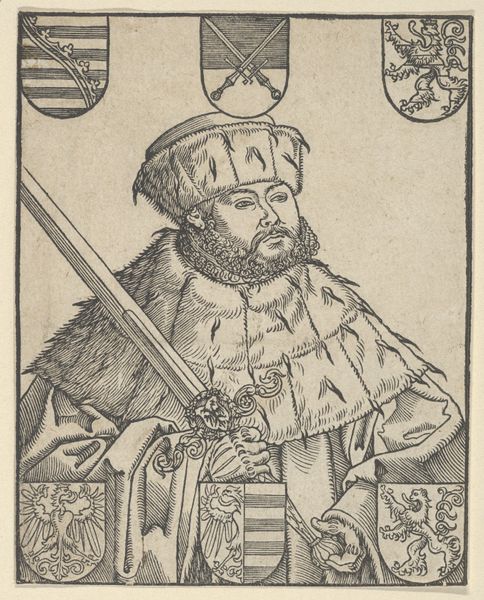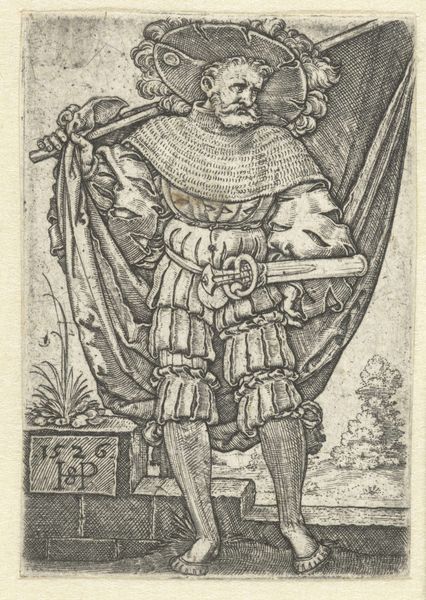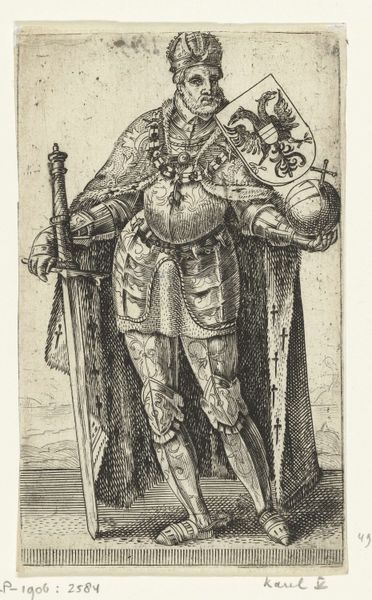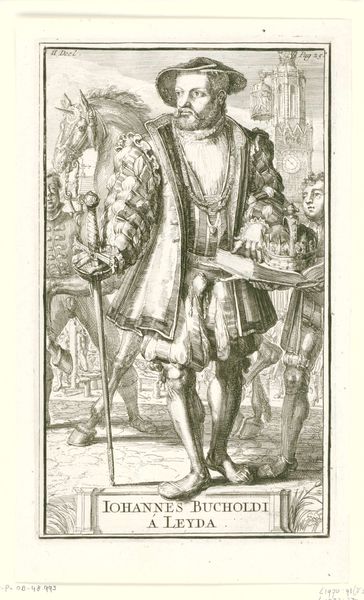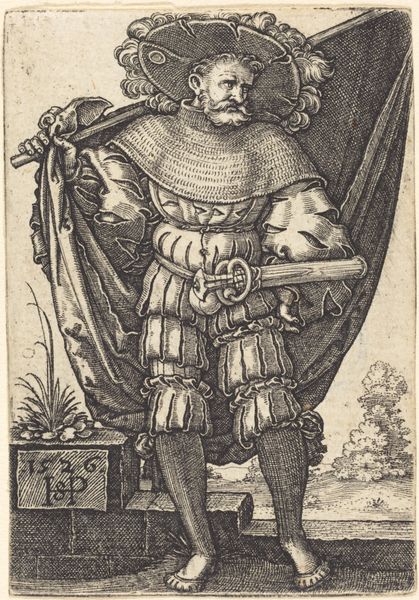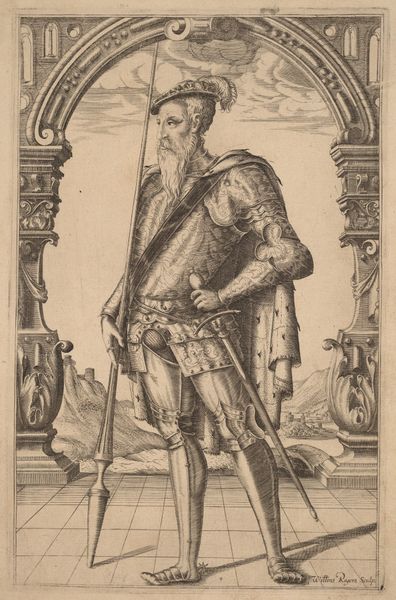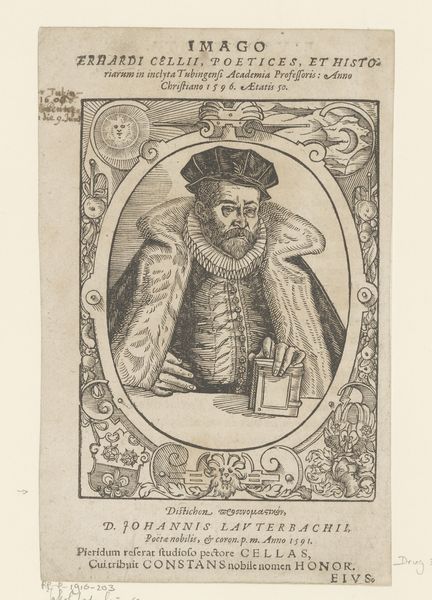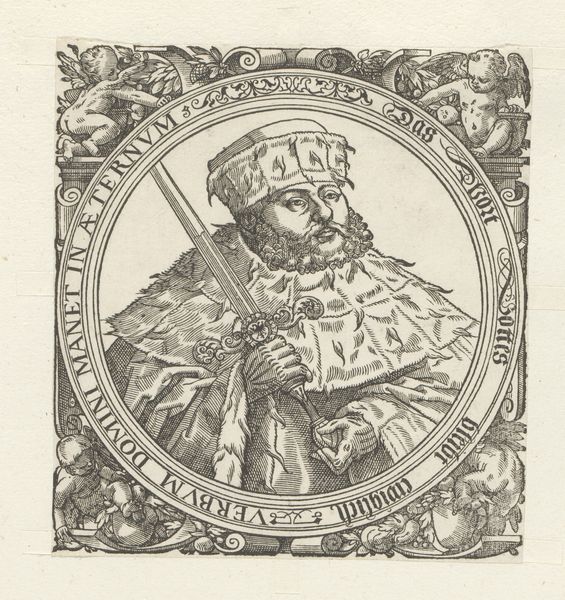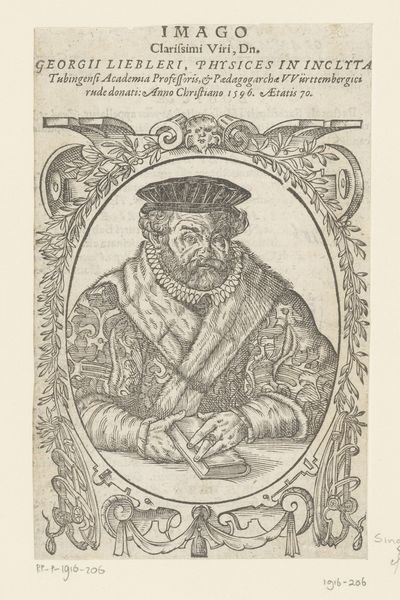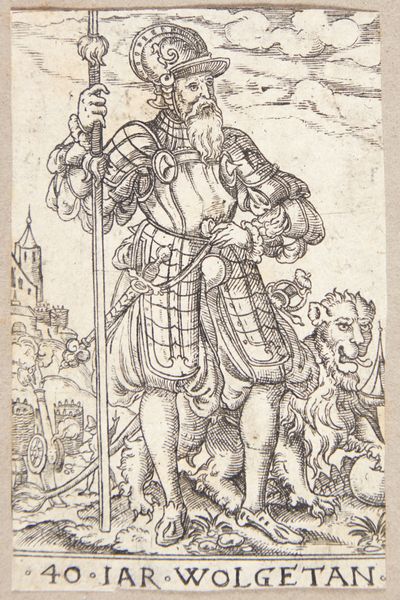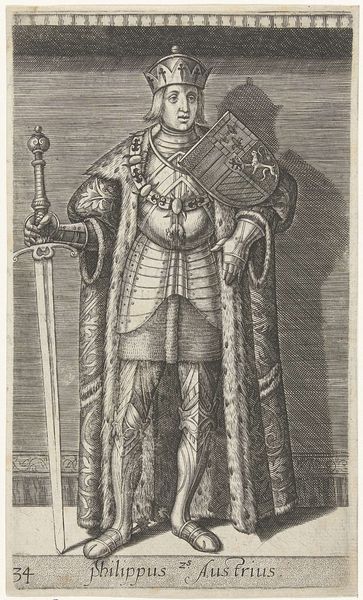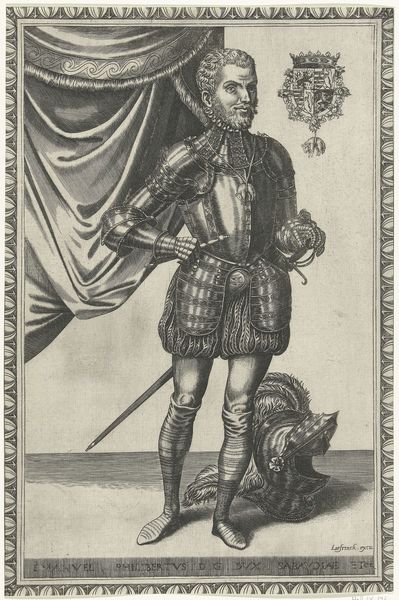
Copy of John Frederic the Magnanimous, in Electoral Robes 1515 - 1586
0:00
0:00
drawing, print, woodcut, engraving
#
portrait
#
drawing
# print
#
pen sketch
#
woodcut
#
history-painting
#
northern-renaissance
#
engraving
Dimensions: Sheet: 7 13/16 × 5 1/8 in. (19.9 × 13 cm)
Copyright: Public Domain
Editor: This is a copy of "John Frederic the Magnanimous, in Electoral Robes" by Lucas Cranach the Younger, created sometime between 1515 and 1586. It's an engraving, with a lot of fine detail. I find the figure to be quite imposing, especially with the sword and the surrounding heraldry. What historical context might be helpful to understand this print? Curator: Well, this image of John Frederic speaks volumes about the public image and political ambitions of a ruler during the Reformation. Cranach, being a court artist deeply involved with the Lutheran cause, shaped this portrait to convey power but also to embed the subject within a network of alliances, visible in the heraldic symbols. Consider how the distribution of such prints would have functioned: How would displaying the ruler's lineage, titles, and implied allegiances bolster their political standing, especially during times of religious and political upheaval? Editor: It's interesting how you frame it as carefully constructed propaganda. Were these images widely circulated? And did Cranach's religious beliefs influence the portrayal of John Frederic? Curator: Absolutely. Printmaking was a powerful tool for disseminating ideas. Cranach's commitment to the Reformation likely influenced the strength and conviction with which John Frederic is presented – projecting him as a strong and divinely sanctioned leader in the face of opposition from the Catholic Church. Also, look closely at the Latin inscription—do you notice anything significant about its tone and message? Editor: I see... it speaks of virtue and noble name. So, this image is actively shaping the perception of John Frederic. That makes you wonder about accuracy. Curator: Precisely! These images served to construct and reinforce particular narratives about power, legitimacy, and religious authority. Looking at art like this helps us unpack the political maneuvering of the era and understand how individuals like Cranach contributed to the cultural landscape of the Reformation. Editor: This really puts the portrait in a new light, transforming it from a simple likeness into a carefully crafted political statement. I had never considered how deeply intertwined art and politics were. Curator: And understanding that connection is key to truly engaging with art history!
Comments
No comments
Be the first to comment and join the conversation on the ultimate creative platform.
